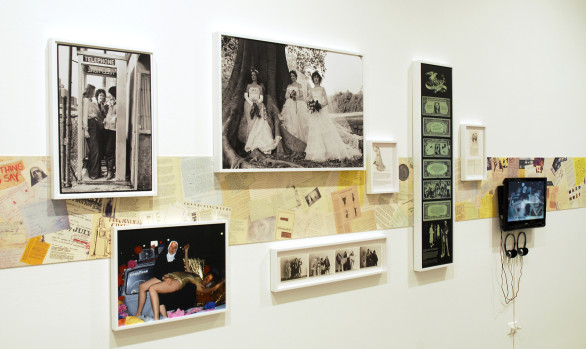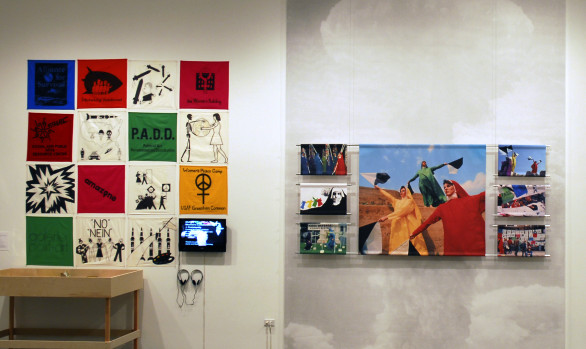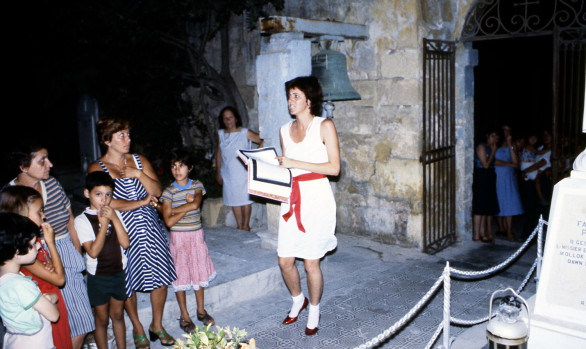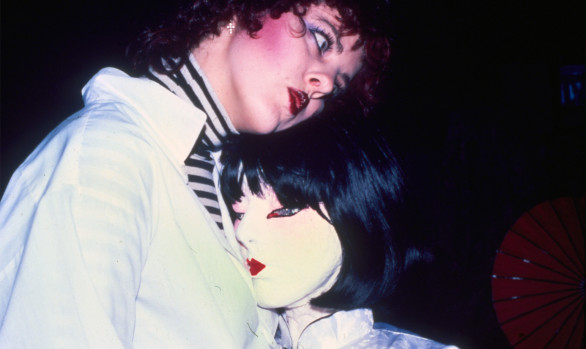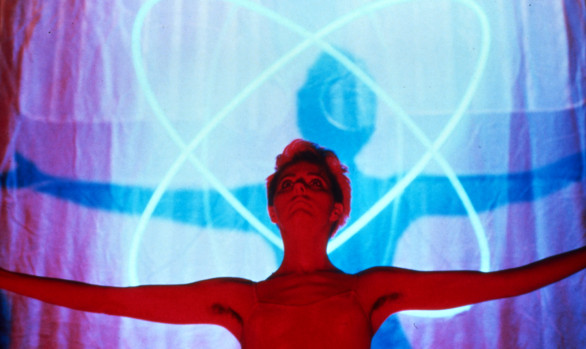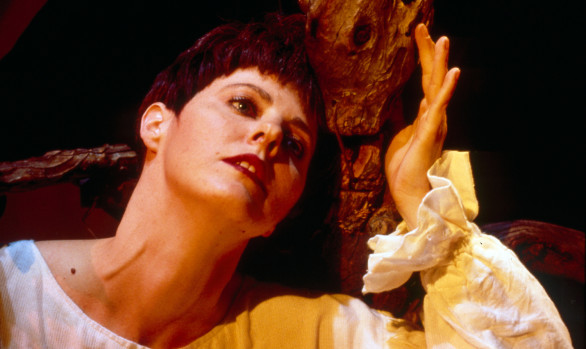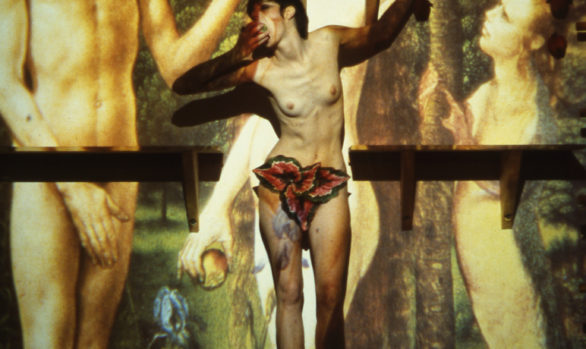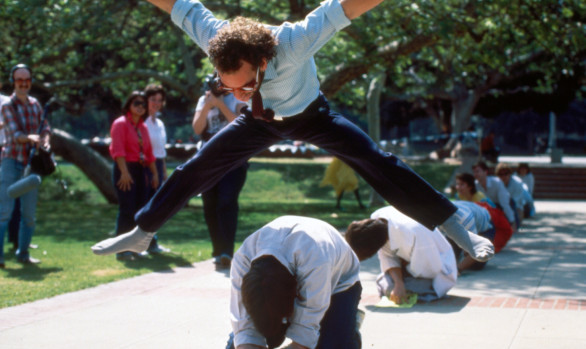Broken Shoes
Performance1980, DTLA, part of Public Spirit performance series
Broken Shoes explores the cultural and psychological impact of footbinding and high-heeled shoes on female identity. Through ritual, storytelling, and evocative visuals, the performance reveals the objectification and constraints placed on women’s bodies, especially their feet.
Audience members enter a gauze-covered space filled with the sound of Tibetan bells, creating a ceremonial atmosphere. Female performers in white attire and red high heels kneel to remove each visitor’s shoes, placing them on white pillows—a symbolic gesture of reverence and vulnerability. These shoes are then moved to the front stage, where they later play a central role.
The performance opens with a short film showing an animated red foot bound in a high heel. The shoe tears apart, revealing a bloodied foot that sprouts white wings and ascends. This haunting image leads into a series of recorded stories where women recount personal traumas from footwear, including a young girl’s painful confirmation shoes, an older woman’s surgeries, and a Chinese woman’s experience of footbinding. As these stories unfold, a glowing footless skeleton appears in the loft above, underscoring a dark history of suffering in pursuit of beauty.
Throughout the performance, six performers manipulate the audience’s shoes, suspending them from the ceiling to “dance” to Fats Waller’s “Your Feet’s Too Big.” Shadows of spike heels loom hauntingly on the walls, highlighting the absurdity and pain of fashionable footwear. In one segment, two women, bound at their feet, struggle before finding a way to move in cooperation.
As the climax nears, Gaulke appears in towering platform shoes, moving with crutches toward the edge of the loft. An audiotape recounts the physical harm endured from years of high heel use. In the final act, Gaulke constructs a ladder from crutches, and she and the skeleton marionette descend, joining the other performers in a barefoot dance.
Broken Shoes critiques Western beauty standards and highlights cultural practices that have constrained women’s bodies. By blending performance art with ritual, Gaulke transforms the audience from passive viewers into participants in a contemplative journey, prompting reflection on the sacrifices made for fashion and social acceptance.

